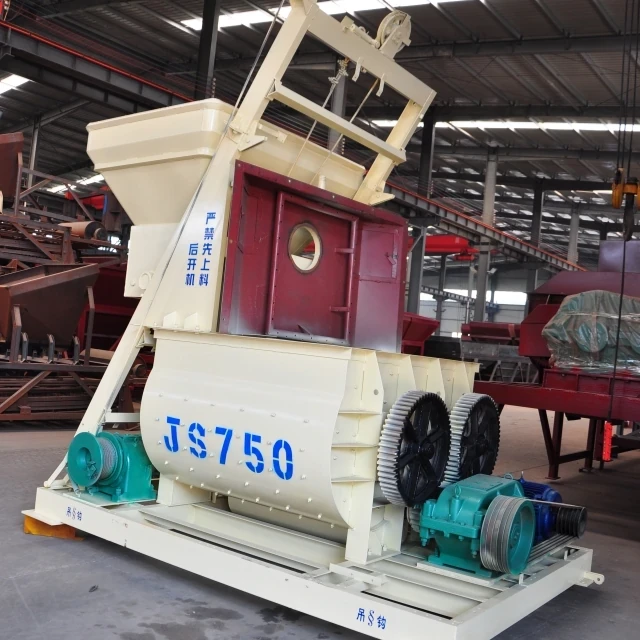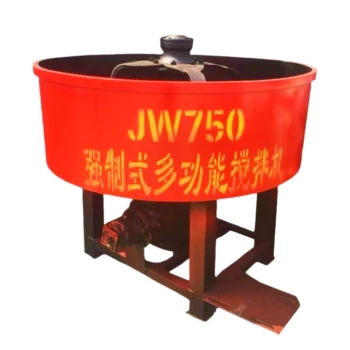Industrial mixing stations face heightened risks during break-in periods, where improper handling can lead to premature wear, unplanned downtime, and costly repairs. This guide reveals proven strategies to optimize performance from day one—focusing on lubrication precision, technician training, and systematic maintenance.
Break-in Period Challenges in Industrial Mixing Stations
New mixing equipment undergoes a critical磨合 phase where components settle into optimal alignment. Nearly 40% of premature failures occur within this window due to three overlooked factors:
- Metal-on-metal friction spikes from imperfectly seated bearings
- Lubricant breakdown under initial high-load conditions
- Operational inconsistencies when untrained staff override automated systems
Ever wondered why some mixing stations last decades while others fail within months? The difference lies in break-in protocols.
Root Causes of Premature Equipment Wear
Thermal Stress Points
During initial runs, uneven heat distribution creates microscopic cracks in gear teeth. Garlway field studies show stations using intermittent start-up cycles reduce thermal shock by 62% compared to continuous operation.
Contaminated Lubricants
New components shed microscopic metal particles that transform lubricants into abrasive slurries. Industry data indicates:
- 78% of sampled failed pumps contained particulate-contaminated oil
- 50μm+ particles accelerate wear rates by 8x
Vibration-Induced Loosening
Unstabilized bases allow harmonic vibrations to loosen mounting bolts. A single 0.5mm misalignment can increase shaft load by 300%.
Critical Role of Lubrication and Component Stability
Break-in Specific Formulations
High-phosphorus lubricants form protective sacrificial layers during initial runs. Key characteristics:
- EP (extreme pressure) additives for boundary lubrication
- Temporary viscosity boosters to compensate for clearance variations
The 4-Point Stabilization Method
- Laser-align all drive components within 0.1mm tolerance
- Torque-check mounting hardware at 8-hour intervals for first week
- Install vibration dampeners on motor mounts
- Conduct infrared scans to detect early thermal anomalies
Did you know? Properly run-in mixing stations show 22% lower energy consumption post-break-in.
Strategies for Minimizing Operational Risks
Best Practices for Lubrication System Calibration
Phase-Specific Oil Changes
| Break-in Stage | Interval | Oil Type |
|---|---|---|
| 0-50 hrs | Every 12 hrs | High-detergent flush oil |
| 50-200 hrs | Every 24 hrs | EP fortified mineral oil |
| 200+ hrs | Standard schedule | Synthetic blend |
Real-Time Monitoring
Wireless oil condition sensors tracking:
- Dielectric constant changes (water contamination)
- Ferrous density (wear particle accumulation)
Technician Training to Prevent Human Error
The 3-2-1 Startup Protocol
3 minutes pre-lubrication
2 minutes low-speed rotation
1 minute load testing
Common mistakes trainers eliminate:
- Skipping warm-up cycles to "save time"
- Over-tightening packing glands
- Misinterpreting abnormal noise signatures
Implementing Preventive Maintenance Checklists
Daily Break-in Checks
- Verify oil reservoir levels
- Inspect coupling alignment marks
- Record vibration readings at 3 load points
- Clean magnetic drain plugs
Weekly Critical Tasks
- Re-torque foundation bolts to spec
- Test emergency stop response times
- Rotate lubricant sampling ports
Conclusion: Building Reliability from First Rotation
Mixing station longevity depends on treating break-in periods as precision calibration windows rather than inconveniences. By combining:
- Phase-appropriate lubrication strategies
- Technician competency verification
- Data-driven maintenance tracking
Operators can extend equipment lifecycles by 3-5 years while reducing unplanned downtime by up to 70%. For operations using Garlway winch-assisted mixing systems, these protocols integrate seamlessly with existing telemetry platforms—turning break-in risks into reliability foundations.
Actionable Next Steps:
- Download our break-in lubrication schedule template
- Schedule technician certification for new equipment
- Implement vibration baseline testing before first production run
Related Products
- Commercial Construction Mixer Machine for Soil Cement Mixing Concrete
- Ready Mixer Machine for Construction Ready Mix Machinery
- Portable Concrete Mixer Machine Equipment for Mixing Concrete
- HZS75 Concrete Batching Plant Cement Mixer Price Concrete Mixer Bunnings Mixing Plant
- HZS180 Ready Mix Concrete Plant for Foundations with Sand and Cement
Related Articles
- How to Master Concrete Mixer Operation: Training, Certification, and Safety Protocols
- How to Test Concrete Mixer Brake Systems for Optimal Safety and Compliance
- How to Maintain Hydraulic Systems in Concrete Mixers: A Safety-Focused Guide
- Optimizing Concrete Mixer Safety: How Proactive Tire and Suspension Maintenance Prevents Catastrophic Failures
- How to Classify and Resolve Concrete Mixer Hazards with Compliance



















